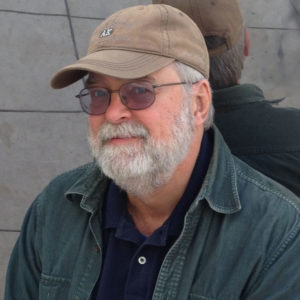Music in Diverse Styles
Douglas Anderson composer
Douglas Anderson’s music may follow a guiding thread of atonality, but since the New York native’s tastes are eclectic, so are his works. MUSIC IN DIVERSE STYLES is a showcase of Anderson’s genre-busting creativity, a deep exploration of musical paradigms.
As the album cycles through different chamber setups from duo to septet, Anderson presents his evolving, idiosyncratic serialism through the prism of heterogeneous genres including bluegrass and rock. Most impressive, perhaps, is the consistency in quality, despite the works spanning four decades. As a composer, Anderson has woven quite the tapestry in this Ravello Records release.
Listen
Stream/Buy
Choose your platform
Track Listing & Credits
| # | Title | Composer | Performer | |
|---|---|---|---|---|
| 01 | Rock Riffs | Douglas Anderson | Paul Kulka, piccolo; Gary Dranch, bass clarinet; Scott Still, tambourine | 3:58 |
| 02 | Trio Suite: I. Sostenuto | Douglas Anderson | Paul Kulka, flutes; Gary Dranch, clarinets; Scott Still, percussion | 4:42 |
| 03 | Trio Suite: II. Glacially Slow | Douglas Anderson | Paul Kulka, flutes; Gary Dranch, clarinets; Scott Still, percussion | 5:46 |
| 04 | Trio Suite: III. Allegro Assai | Douglas Anderson | Paul Kulka, flutes; Gary Dranch, clarinets; Scott Still, percussion | 4:07 |
| 05 | Vocalise No. 2 | Douglas Anderson | Ina Litera, viola; Matt Goeke, cello | 5:27 |
| 06 | Trio for Clarinet, Cello and Piano | Douglas Anderson | Donald Mokrynski, clarinet; Matt Goeke, cello; Renee Cometa Briggs, piano | 12:05 |
| 07 | Septet | Douglas Anderson | Douglas Anderson, conductor; Paul Kulka, flute; John Frisch, oboe; Gary Dranch, clarinet; Yuki Hagashi, bassoon; Barney Stevens, violin; Ina Litera, viola; Matt Goeke, cello | 7:52 |
| 08 | Brass Trio: I. A Jocular Conversation | Douglas Anderson | Tom Verchot, trumpet; Debbie Schmidt, French horn; Roger Verdi, trombone | 4:56 |
| 09 | Brass Trio: II. Solemn Procession | Douglas Anderson | Tom Verchot, trumpet; Debbie Schmidt, French horn; Roger Verdi, trombone | 2:26 |
| 10 | Brass Trio: III. The Chase | Douglas Anderson | Tom Verchot, trumpet; Debbie Schmidt, French horn; Roger Verdi, trombone | 4:42 |
| 11 | Vernal Tracing No. 4 | Douglas Anderson | Suzanne Gilchrest, alto flute; Scott Still, marimba | 6:38 |
| 12 | Reverse Variations on 'Arkansas Traveler' | Douglas Anderson | Eight Strings & a Whistle | Suzanne Gilchrest, flute; Ina Litera, viola; Matt Goeke, cello | 5:01 |
| 13 | Some Thoughts on 'The Rights of Man' | Douglas Anderson | Denise Cridge, Ina Litera, Myra Kelly, Fritz Bernardin - violas | 5:55 |
Tracks 1-4, 11
Recorded February 11, 2024 at National Opera Center in New York NY
Session Producer & Engineer Kurt Briggs
Tracks 5, 8-10 & 12
Recorded January 5 & 18, 2024 at Borough of Manhattan Community College in New York NY
Session Producer & Engineer Kurt Briggs
Track 6
Recorded June 3, 2024 at NV Factory in Englewood Cliffs NJ
Session Producer Kurt Briggs
Session Engineers Sean Yoo, Mi Sun Oh
Track 7
Recorded February 18, 2024 at 2nd Story Sound in New York NY
Session Producer Kurt Briggs
Session Engineer Scott Lehrer
Track 13
Recorded October 9, 2024 at Martin Patrych Memorial Studio in New York NY
Session Producer Kurt Briggs
Session Engineer Joseph Patrych
Editing & Mixing Kurt Briggs
Mastering Melanie Montgomery
Executive Producer Bob Lord
A&R Director Brandon MacNeil
A&R Jeff LeRoy
VP of Production Jan Košulič
Audio Director Lucas Paquette
VP, Design & Marketing Brett Picknell
Art Director Ryan Harrison
Design Edward A. Fleming
Publicity Kacie Brown
Digital Marketing Manager Brett Iannucci
Artist Information

Douglas Anderson
Douglas Anderson is a composer, conductor, educator, and producer who has been active in the New York area for 50 years. He studied music and psychology at Columbia University, where his three degrees culminated in a doctorate in music composition in 1980. His professional career began as a jazz musician at the age of 12, and he performed widely in the Eastern United States before moving to New York to attend college. His work as a conductor has been his performance focus for the last several decades.
Notes
The pieces in this collection were written over several decades for differing chamber ensembles. As the album title indicates, they represent a variety of styles that have interested me, ranging from serialism to rock to bluegrass to minimalism and more. In each case, I wrote sometimes with particular performers (and their own styles and capabilities) in mind, and sometimes not.
When a new work is commissioned I typically ask the performers what they would be likely to program on a concert with my piece; these works then represent my response to those performance contexts as well as my own explorations. Unlike some composers, my primary focus in writing music is to give the audience a self-contained experience when they listen to my music, what others have described as a musical journey. It is also true that I get a great deal of pleasure and satisfaction in trying to create that journey.
A common (but not universal) thread of my compositional technique has been the investigation and development of serialism, which in my shorthand moved from serialism 2.0 (1970s), to 2.5 (1980s and early 90s), to 3.0 (2000s), and beyond that in more recent years. With the ultimate objective of developing and using serial techniques to create the musical journey of the piece, and to have the same degree of flexibility, stylistic variety and musical impact as tonality, I’ve moved to the point where listeners don’t even recognize it as serialism, an outcome I welcome.
Below are short descriptions of each piece and their genesis:

